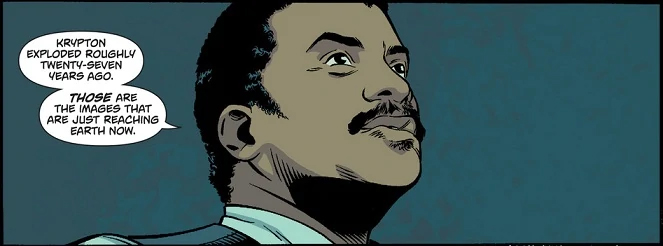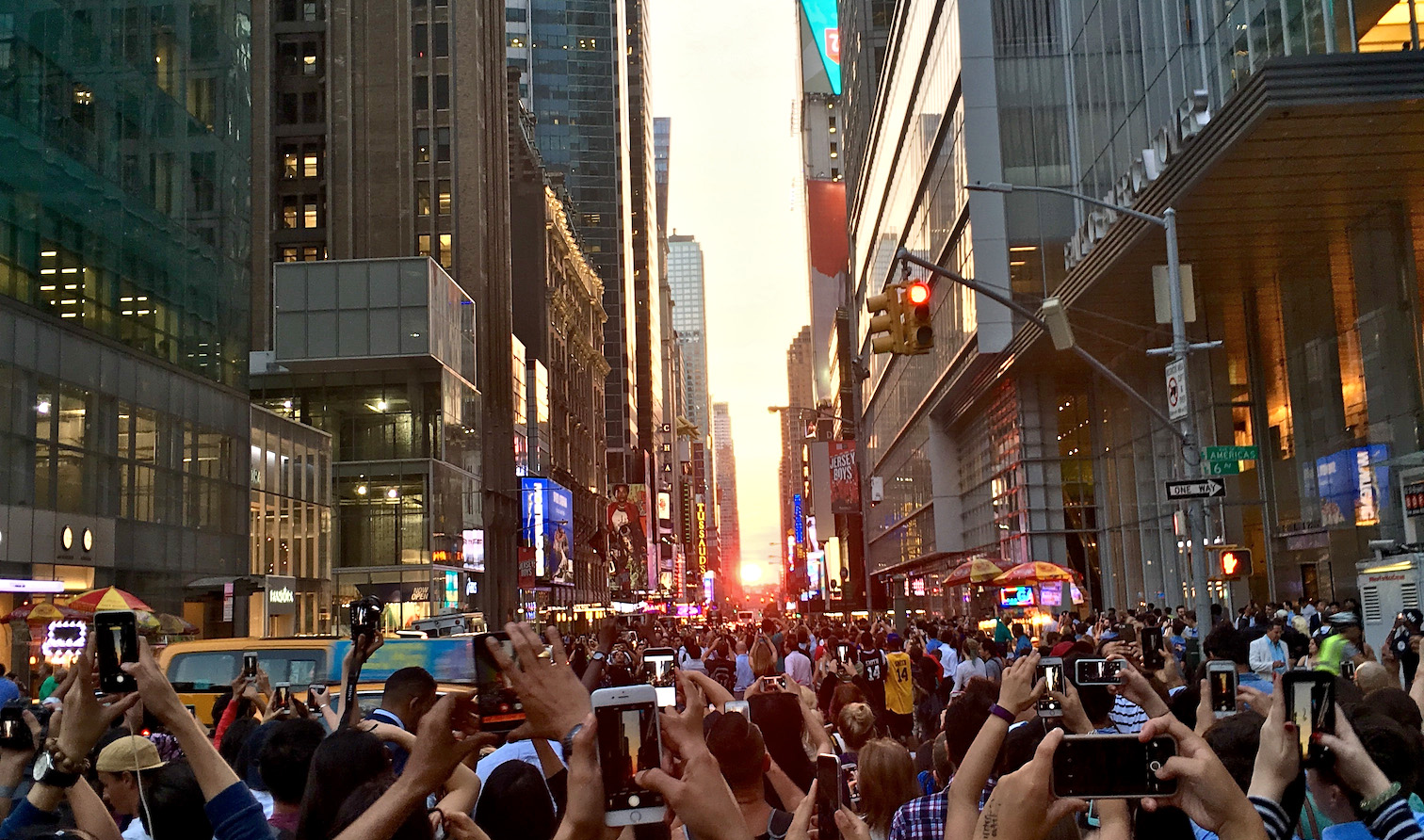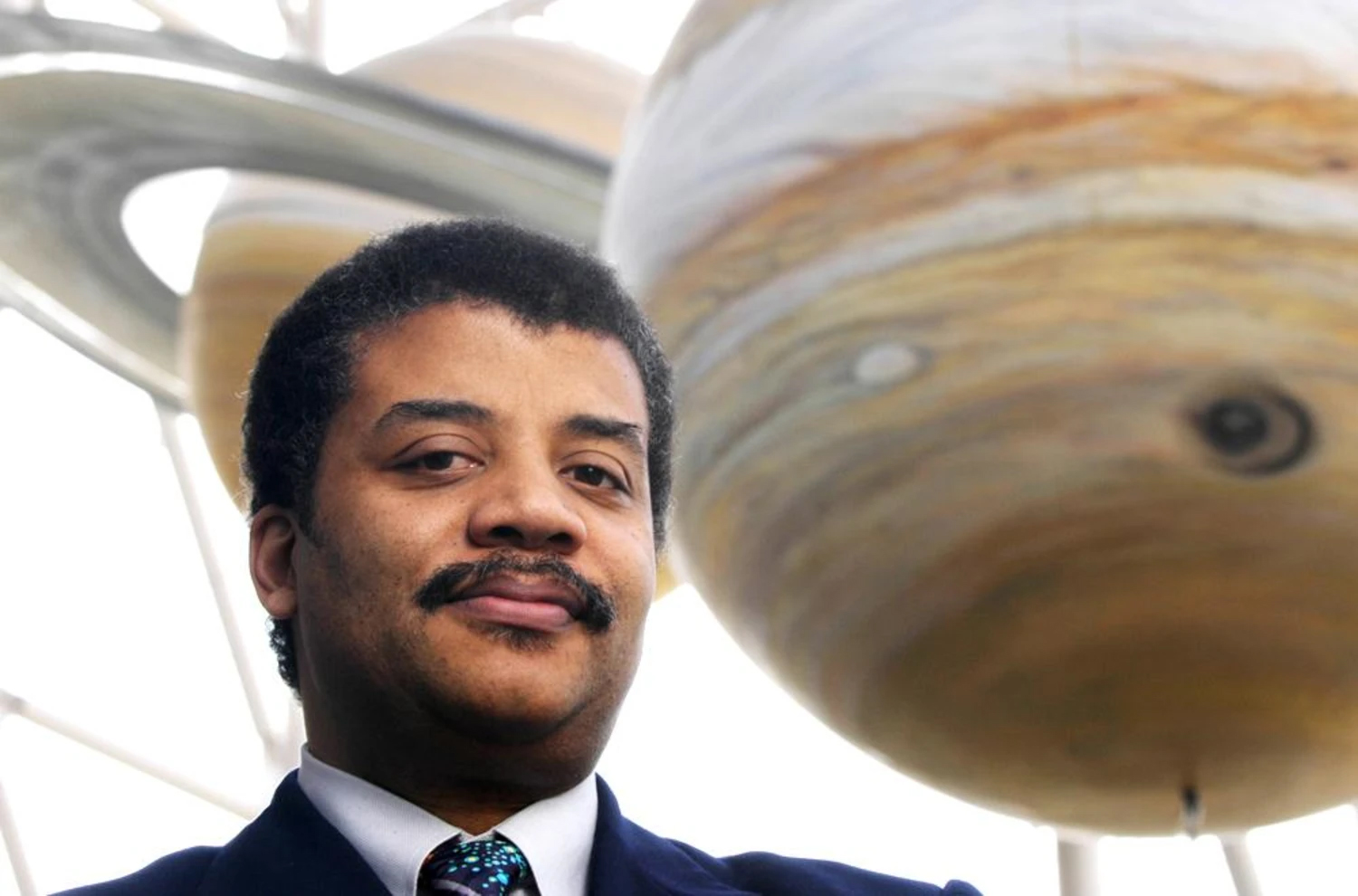Neil deGrasse Tyson: True Superhero of the Cosmos
Neil deGrasse Tyson is many things - an athlete, a scientist, a celebrity, and most of all an educator who has pushed back boundaries while inspiring countless budding scientists. While he is now unquestionably the most famous scientist on earth, his career has been defined by a desire to ensure that it is the stars who are the star; he is a frequently mischievous and highly effective publicist, but this True Superhero’s goal has always been to raise awareness about the heavens, not himself.
A reluctant athlete, looking to the stars
Neil was born in 1958 in New York and grew up in the Bronx. From an early age he was fascinated by the cosmos thanks to a family trip to New York’s Hayden Planetarium in 1967. Neil was amazed by this first exposure to the world of astronomy and later described how he felt “as if he could see forever”. His ambition in life from that point onward was to become an astronomer and extend his vision and knowledge of the stars as much as possible.

Sadly, his ambitions were not initially supported by his teachers, who pushed him toward less academic pursuits. Neil later spoke of how “at no time in my schooling did any teacher ever say to me, ‘Oh, watch him, he’ll go far!’... But then they see I have some athletic talent, and so it was, ‘Oh, you should be an athlete! Well, in the ‘60s and ‘70s the only famous black people anyone ever knew were athletes and, oh my gosh! I became an athlete.”
"The brand new social experience where you activate your gaming skills as you train like a spy."
- TimeOut
Take on thrilling, high-energy espionage challenges across different game zones.

Neil was certainly an excellent athlete, specializing in wrestling, but he did not give up on his ambitions and throughout his childhood he worked at part-time jobs to invest in his astral obsession, buying bigger and better telescopes and even funding a trip to study at Stonehenge when he was just 15 years old. On his return to New York, he gave public lectures on astronomy and gained notoriety amongst the city’s scientific community as a teenage prodigy. By his final year of high school, Neil wasn’t just the captain of the wrestling team, but also the editor-in-chief of the Physical Science Journal.
A budding scientist, calming fears of armageddon
In 1977, Neil moved to Boston to study physics at Harvard. Boston was a hotbed of racial tension at the time, as efforts to desegregate the city’s public schools were stoking anger and bigotry in white neighborhoods, and Neil later spoke of how he was frequently racially abused and “was only really safe from that on the Harvard campus”. Racial issues were also prominent on campus, where he was criticized by fellow black students for his choice of degree; once being told that “the black community cannot afford the luxury of (allowing) someone with your intellect to spend it on astrophysics”. This led Tyson to feel guilty that “I wasn’t doing all I could to help others”, a concern that plagued him until he made his first television appearance over a decade later.
On March 10, 1989, astronomers observed a huge interplanetary coronal mass ejection (ICME) - a solar flare that spat an enormous ball of plasma directly at the Earth. The ICME was roughly 36 times larger than Earth itself and understandably this event caught the attention of the news media. New York’s local Fox News affiliate phoned Columbia University’s astronomy department and got through to Neil deGrasse Tyson, who by this stage was studying there for his PhD. That night, Neil appeared on Fox and calmly explained that there was very little to worry about: when the plasma reached Earth’s atmosphere it would be dispersed across the magnetosphere toward the poles. The most likely outcome would be aurorae (similar to the aurora borealis) showing in the night sky, and possibly some temporary damage to electrical power grids. (When the ICME hit three days later it did, in fact, shut down Quebec’s electricity grid for nine hours).

When Neil watched his performance later that day, it struck him that this was the first time he had seen a TV news interview with a black expert that had nothing to do with being black. He later joked that the interviewer had not asked him, “How do black people feel about this plasma coming from the sun? How does your community feel about this?” Neil came to realize that by simply being a prominent scientist who happened to be black, he could have an enormous impact; as he would later put it: ”I just have to be visible and that would have a greater force on society than anything else I could imagine.” Before long, Neil would become the most visible scientist on Earth.
A celebrity, canceling an entire planet
In 1994, Neil returned to work at the place where his astronomical journey had started, the Hayden Planetarium, and in 1996 he was appointed director. He has subsequently ascribed his enormous media fame to his location as the nearest astronomical expert to New York’s many news media organizations, but there is little doubt that he has worked extremely hard to keep astronomy newsworthy and been very successful at it. For example, in 1997 he wrote an article for Natural History that described Manhattanhenge, the annual event where the sun rises at the precise point to be perfectly framed by New York’s skyscrapers which has now become a phenomenon attracting tourists from all over the globe, and many news teams to Neil’s office. Other examples include his public pronouncement that a razor-tight NFL game was not won by the skill of the Cincinnati Bengals’ field goal kicker, but by the rotation of the Earth and his annual Christmas Twitter controversies where he courts outrage with mischievous and overly-literal tweets about Santa Claus. He’s even worked with Superman, appearing in Action Comics vol.2 #14 to assist the Man of Steel in the search for his home planet of Krypton.

That said, the biggest controversy in Tyson’s career was certainly caused by his proximity to the news media, when a New York Times reporter discovered a sensational scoop on a chance visit to the Hayden Planetarium. Neil had recently launched an exhibition of the solar system that grouped Pluto not with the other planets, but with other distant objects found in the Kuiper belt. This was not controversial from an academic perspective; Pluto’s status as a planet had been a subject of debate for several years, but the New York Times sensed both controversy and a local angle, breaking the shock news of Pluto’s demotion on the front page with the headline Pluto's Not a Planet? Only in New York. The article’s text was more considered, acknowledging the ongoing debate about Pluto’s planetary status, but the damage had been done and it was Neil deGrasse Tyson who was publicly held responsible for the downgrade. He claims to have received hate mail for many years from devoted Pluto fans, but has leaned into the controversy, publicly stating that “Pluto had it coming”.

A True Superhero, educating by stealth
Through all of this controversy, the one thing that has been consistent is Tyson’s knack for presenting scientific content in a manner that is as entertaining as it is educational. From that first appearance on Fox News to the present day, Neil’s been hugely effective in his ambition to become a force for good in society simply through being visible, and has rarely felt the need to weigh in on matters that are unrelated to his stellar speciality. For this reason, he has refused all interviews since 1993 that focus on race as a subject, although he has sometimes volunteered his own contributions to the debate, such as a heartfelt open letter published during the Black Lives Matter protests, outlining his own experiences of racist policing. But his focus remains on the skies and he uses his media work to generate interest and lobby for increased funding for Nasa, lobbying that may prove to be crucial if his warnings about the near-Earth objects come to fruition. Neil’s message is not just about existential threats to humanity; it is just as important to him to provoke the same sense of wonder that he himself felt as a boy at the Planetarium that he would later run, and he is fond of quoting Antoine de Saint-Exupéry, author of The Little Prince:
“If you want to build a ship, don’t drum up people together to collect wood and don’t assign them tasks and work, but rather teach them to long for the endless immensity of the sea.“
SPYSCAPE+

Join now to get True Spies episodes early and ad-free every week, plus subscriber-only Debriefs and Q&As to bring you closer to your favorite spies and stories from the show. You’ll also get our exclusive series The Razumov Files and The Great James Bond Car Robbery!


Gadgets & Gifts
Explore a world of secrets together. Navigate through interactive exhibits and missions to discover your spy roles.
Your Spy Skills
We all have valuable spy skills - your mission is to discover yours. See if you have what it takes to be a secret agent, with our authentic spy skills evaluation* developed by a former Head of Training at British Intelligence. It's FREE so share & compare with friends now!
* Find more information about the scientific methods behind the evaluation here.


Stay Connected
Follow us for the latest
TIKTOK
INSTAGRAM
X
FACEBOOK
YOUTUBE